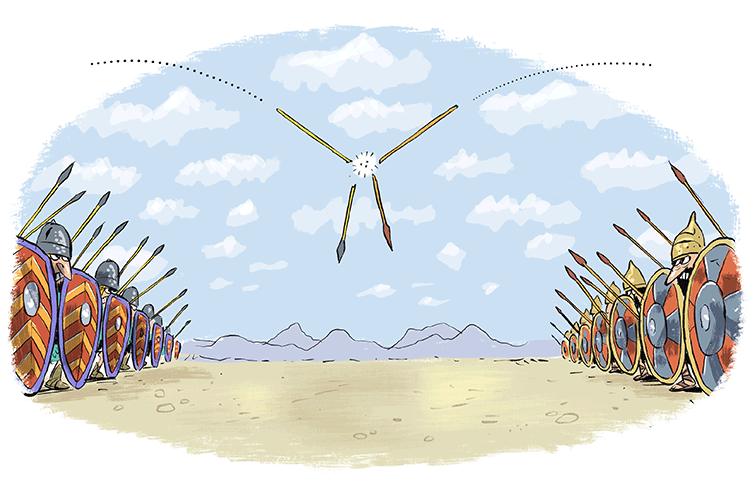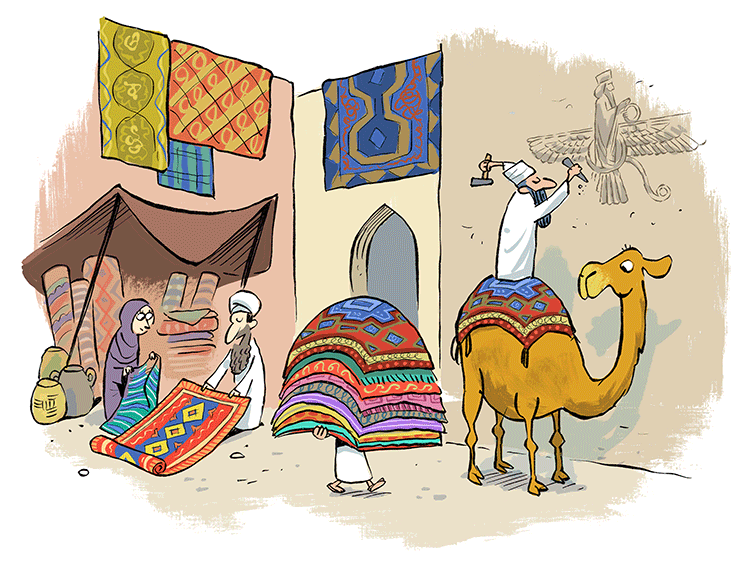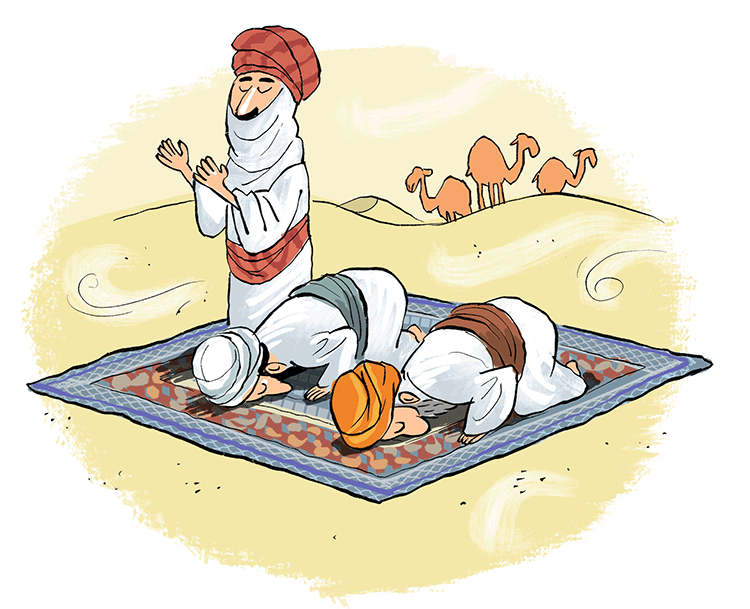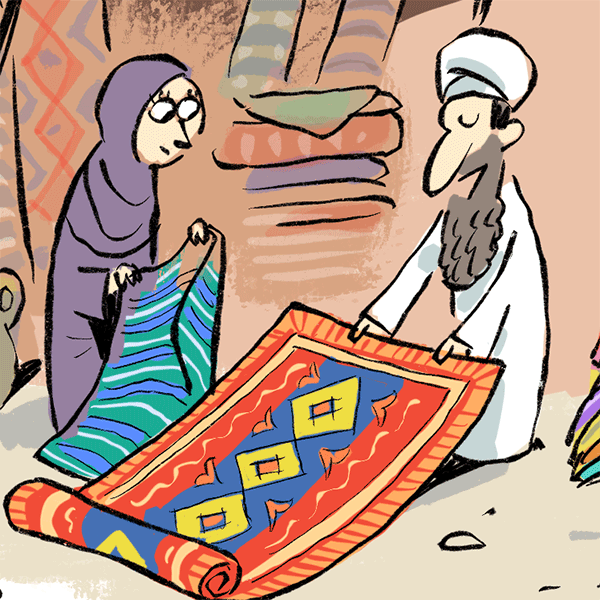Have you ever heard someone refer to Asia as “the East?” Or Europe as “the West?” Or the region between the two as the “Middle East?”
Have you ever wondered why?
You might think you need a compass to figure this out. But the actual answer is a bit more complicated.
Today, the regions of Europe and Asia are culturally, politically, and ideologically distinct. But they are geographically connected.
In fact, many historians prefer to group Europe and Asia into one continent, known as Eurasia. This is because the only thing really separating them is culture and politics. This is in contrast to other continents such as Africa and Australia, which are physically separate from the others.
Because of this connection, cultures from Europe have long sought to conquer and control lands to the east. But they weren’t the only ones looking to expand. Powerful Asian groups have been looking west to expand their territory for most of human history.
But neither side managed to win over the other.
Why?
There are a few reasons.
One is simple geography.
The Eurasian continent is simply too big for one culture to control on their own. But another is that the Middle East, a region that includes the modern day nations of Syria, Iraq, Iran, Saudi Arabia, and more, has been home to some of the world’s most powerful civilizations of human history.
Of these, the Persians have one of the longest and richest histories. Several dynasties spanning more than 1,000 years helped fend off European advances to the East. And they also kept people from the East from going too far into Europe.
This contributed to a division between the East and West that is still alive today.
The Long History of Persian Civilization
Persia is the name of the land we now know as Iran. It’s actually originally a Greek word. It’s called Iran today thanks to a movement in the 20th century to revive the ancient roots of the people living there.
In ancient times, people living in Persia called themselves Iranis, a name that comes from their language.
People have been living in what is now Iran for thousands of years. But the first Persian, or Irani, empire was that of the Achaemenids. It emerged around 600 BC.
From this dynasty we get infamous names such as Darius I, Xerxes, and Cyrus the Great. The Achaemenids controlled all of modern-day Iran, Mesopotamia, and Egypt, and they were constantly seeking expansion in the west. They tried repeatedly to conquer Greece. But they were never successful.
The Achaemenid Persian Empire fell to Alexander the Great and his Macedonian Greek armies in the 4th century BC. But it wasn’t long until the Persians regained their independence.
This born-again Persian empire was called the Sasanian Empire, named after the House of Sasan, the Persian family that led the movement to win back their homeland.
The Sasanian Empire lasted for close to 600 years, and its not-so-friendly relations with its neighbors to the west helped separate the East and West at a time when it seemed like they might be coming closer together.

War with Byzantium Widens the East/West Divide
Throughout the Middle Ages, the most powerful empire in Europe was known as Byzantium. This was the part of the Roman empire that survived the fall of Rome in 476 AD and that remained a relevant power for nearly 1,00 years. Well, actually, to people living at that time, it was known as “Rome.” But to make things really confusing, the city of Rome wasn’t actually a part of this empire.
Throughout its history, it was no secret that the leaders of Byzantium wanted to conquer the lands of Persia. And the Persians had always had an interest in moving west.
The result? Lots and lots of war between Byzantium and the Sassanids.
In fact, for a period of nearly seven centuries, or 700 years, the two sides fought pretty much constantly.
The result?
A big ole tie.
Towns and cities would change hands from time to time, but neither side managed to make significant progress into the territory of the other. Both were too powerful, and battle sites were too far from the centers of each empire to sustain a successful military campaign.
The Sassanians Keep Europe Out of Asia
As a result, efforts to Romanize the Middle East, which was largely controlled by the Sassanid Persians, pretty much failed. And efforts to push the Byzantines back and expand Persian control also bore no fruit.
The significance of this was that a cultural wall (imaginary, not real) went up between the two powers, and more, importantly, the two regions.
Europe and Asia, which had always been kind of connected but mostly separate, remained divided politically, which made room for two very distinct cultures to develop.
Today, this barrier between East and West still runs through what was once Persia and is now Iran. This is the result of centuries of failed conflicts between two of history’s most powerful civilizations.

A Totally Different Culture
This divide between the east and the west was made that much more meaningful by the stark differences in culture between the Byzantine and Sasanian empires.
The most glaring difference was religion. While Byzantium practiced Christinaity, the Sasanians believed in Zoroastrianism.
One of the oldest faiths in the world, and probably the first mongtheistic religion in human history, Zoroastrianism follows the teachings of the ancient prophet Zoroaster.
Developed even before the Achaemenid period, it fell out of favor during the period of Greek conquest. But the Sasanians brought it back big time. They made it the official state religion, commissioned the building of Zoroastrian churches and other religious sites, and persecuted other faiths, especially Christianity.
The Sasanians also had much more contact with the civilizations of east Asia, mainly those in India and China, which influenced both art and industry.
Throughout the Middle Ages, Persian rugs, tapestries, and clothing became sought after items for Europe’s upper classes. But because of the separation between Europe and Asia, these goods were always considered exotic, foreign luxuries, making them sparser and even more desirable.
The Fall of the Sassanids and the Rise of the Arab Empire
The powerful Achaemenid Empire, followed by the Sassanid Empire, helped sustain Persian power for more than 1,000 years. But all things must come to an end.
For the Persians, this happened in the 6th century AD when a new religion emerged in what is now Saudi Arabia. Known as Islam, this new faith spread like wildfire throughout the Middle East and contributed to the political rise of the Arabs.
They eventually conquered the Sassanid Empire, forever changing the history of Iran. But while they were ruled by outsiders, Persian culture remained strong.

The Creation of the “Middle East”
All in all, Iran, or Persia, was simply too big and too populated to be completely overrun by anyone.
As a result, Persian culture wound up having a major influence on that of Islam. In fact, much of the art, architecture, and literature that came out of the major Muslim kingdoms of the Middle Age drew inspiration directly from the Persians.
The existence of such a powerful culture between the extreme ends of the Eurasian continent is a big reason why today we often divide the world into “East” and “West,” and why we call the region in between the “Middle East.”
Being smack dab in between Europe and Asia, this region has no doubt been influenced by both sides. But it by no means belongs to either. Instead, it is and has always been its own entity, and this has played a major role in shaping the world we now live in today.
Written by Matthew Jones
Illustrated by Jean Galvao
